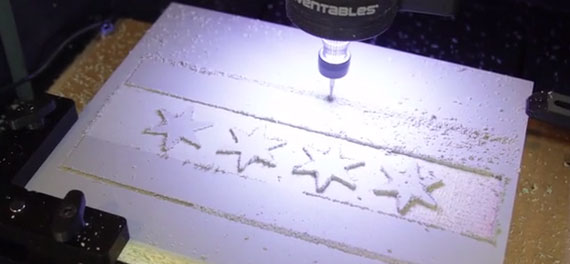
Cropped screenshot of Carvey. Source: the Carvey Kickstarter campaign.
“Mr. Frankel, who started this program, began to suffer from the computer disease that anybody who works with computers now knows about,” [Richard] Feynman later explained. “The trouble with computers is you play with them.”
— George Dyson, describing the beginning of the Manhattan Project’s computing effort in Turing’s Cathedral.
I’ve been reading George Dyson’s terrific history of the early development of the digital computer, and the quote above struck me. Even when they were little more than room-sized adding machines that had to be painstakingly programmed with punchcards, computers offered an intoxicating way to experiment. Most programmers can probably remember their first few scripts and the thrilling feeling of performing millions of operations in seconds. Computers let us take some abstracted human process and repeat it quickly, at almost no cost, with easy modification along the way.
People who know how to program tend to program a lot of things. One of my most engrossing hobbies is writing small scripts to scrape various web apps into databases. Sometimes the patterns I find are interesting, and sometimes they’re not, but the cost of writing these scripts is so low that I might as well explore.
Machines are also intoxicating. The new generation of inexpensive 3D printers and CNC machine tools promises to make iteration inexpensive and broadly accessible — they’ll bring a Python-like process of experimentation into the physical world. That thought struck me as I watched a prototype of Tempo Automation’s pick-and-place robot a couple of weeks ago, and again on the news that Othermill has entered its production run, and again with the launch of fundraising for Inventables’ Carvey machine. These are all desktop machines that promote a tight loop between design and production, and make experimentation easy.
In the same way that all sorts of little information problems can be solved with a snippet of code, you can imagine solving all sorts of little physical problems casually with bench-top tools. Want to gather weather and soil data from your garden? Build a dozen sensors and scatter them around. Commercial agricultural sensors already exist, but creative people code because existing software doesn’t do exactly what they want; creative people will build electronics for the same reason.
Hardware is hard, of course, but software was hard a few decades ago, too, in large part because platforms for experimentation were inaccessible and highly constrained. Tools like Tempo’s robot point to a long, fast democratization of hardware, and to an era when it’ll be almost as easy to play with machines as it is to play with software.
